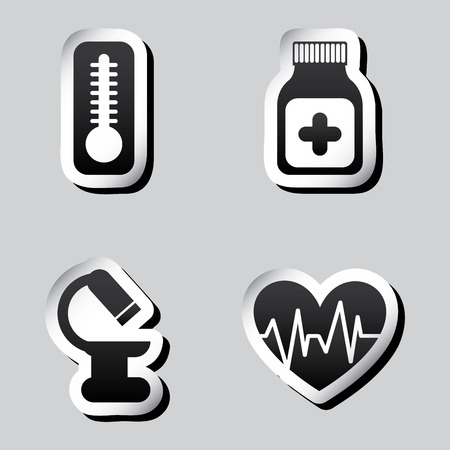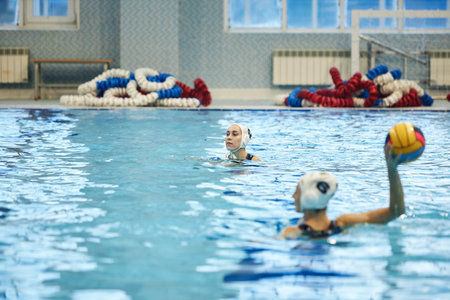Introduction to Water Temperature Management in Therapy
Water temperature management plays a pivotal role in therapeutic environments throughout the UK, shaping both patient outcomes and the standards of care delivered by British clinicians. From hydrotherapy pools in NHS hospitals to private physiotherapy practices, maintaining precise water temperatures is not merely a matter of comfort but one of clinical efficacy and safety. The regulation of water temperature is governed by stringent British guidelines and best practice recommendations, reflecting its significance within UK healthcare. In this context, water temperature serves as a key parameter—impacting rehabilitation processes, infection control, and patient satisfaction. As such, understanding how water temperature is managed in various therapeutic settings is fundamental to appreciating its broader implications for clinical practice across the country.
2. Standards and Guidelines in the UK
Water temperature management is governed by a robust framework of standards and guidelines within the United Kingdom, particularly when it comes to therapeutic use. The National Health Service (NHS) and various professional bodies, such as the Chartered Society of Physiotherapy (CSP) and the Care Quality Commission (CQC), have issued clear recommendations to ensure both safety and efficacy in clinical and care settings.
NHS and Professional Body Recommendations
The NHS identifies strict parameters for water temperatures used in therapy pools, hydrotherapy suites, and bathing facilities. This is to prevent risks such as scalding, hypothermia, or exacerbation of certain medical conditions. The following table summarises key recommendations from leading UK organisations:
| Organisation | Recommended Water Temperature | Purpose/Setting | Additional Notes |
|---|---|---|---|
| NHS Estates Guidance | 34°C – 36°C | Hydrotherapy pools | Regular monitoring required; adjust for vulnerable groups |
| CQC Regulations | Max 44°C | Bathing in care homes/hospitals | No higher than 41°C for children/elderly |
| CSP Advice | 32°C – 35°C | Aquatic physiotherapy | Lower range for active exercises, higher for relaxation/rehabilitation |
| Health & Safety Executive (HSE) | Max 43°C domestic; Max 41°C healthcare | All water outlets accessible to patients/service users | Thermostatic mixing valves recommended for control |
Key Considerations for Practice
The guidance reflects a consensus that safe water temperature management is not only about preventing harm but also about maximising therapeutic outcomes. Regular calibration of thermostatic controls, ongoing staff training, and individual risk assessments are highlighted as best practices. It is also essential to tailor water temperature to the needs of specific populations—for example, those with cardiovascular concerns or mobility issues may require stricter controls or additional supervision.

3. Technical Considerations and Challenges
In the UK, managing water temperature for therapeutic purposes is deeply intertwined with the country’s unique infrastructure, building design, and regulatory standards. Most healthcare and therapy facilities are housed in older buildings, many of which were not originally designed with modern thermal management in mind. This poses particular challenges when retrofitting or upgrading systems to achieve precise control of water temperatures for hydrotherapy pools, baths, or physiotherapy settings.
The technical approach typically involves a combination of centralised boiler systems, thermostatic mixing valves (TMVs), and sophisticated monitoring equipment. TMVs are especially crucial in UK settings due to stringent Health and Safety Executive (HSE) guidelines that mandate tight control over water temperature to prevent scalding while minimising risks associated with Legionella bacteria. These valves are now a standard requirement in NHS facilities, care homes, and private clinics alike.
Building design also influences how effectively water temperature can be controlled. Many UK properties have thick masonry walls and limited insulation, making heat retention a persistent issue—especially during colder months. As a result, facilities often require additional insulation around pipework and storage tanks to maintain stable water temperatures. The integration of energy-efficient heating systems, such as condensing boilers or heat pumps, has become increasingly popular as part of sustainability initiatives across the NHS and private sector.
From an engineering standpoint, ongoing maintenance is vital. Limescale build-up—prevalent in many areas of the UK—can significantly impact the performance of heating elements and sensors, leading to fluctuations in delivered water temperature. Regular descaling and system checks are thus embedded into facility management protocols.
Finally, there is a growing trend towards digital controls and remote monitoring solutions. These systems allow facilities managers to track real-time data on water temperatures throughout their premises, providing early warning of potential faults and ensuring compliance with both safety regulations and therapeutic requirements. While these upgrades present initial costs and installation challenges, they represent an essential step forward in ensuring safe and effective therapy delivery within the context of the UK’s diverse built environment.
4. Clinical Impact on Patient Outcomes
Effective water temperature management plays a pivotal role in determining the success of hydrotherapy interventions for various patient groups across the UK. The relationship between water temperature and clinical outcomes is particularly significant when treating older adults and individuals with mobility issues, two populations that frequently utilise hydrotherapy services within NHS and private care settings.
Water Temperature Influence on Therapy Results
The physiological responses to different water temperatures can either enhance or hinder therapeutic goals. For instance, warmer water generally promotes muscle relaxation and pain relief, while cooler temperatures may be used to reduce inflammation or improve circulation. The table below outlines typical therapeutic outcomes observed in UK practice for these key patient groups:
| Patient Group | Recommended Water Temperature (°C) | Primary Therapeutic Goals | Observed Clinical Outcomes |
|---|---|---|---|
| Older Adults | 33–36 | Pain Relief, Mobility Support, Relaxation | Reduced joint stiffness, improved comfort, enhanced participation in exercise |
| Individuals with Mobility Issues | 32–35 | Muscle Relaxation, Spasticity Reduction, Functional Movement Training | Diminished muscle tone, increased range of motion, safer movement practice |
| Post-Operative Patients | 31–34 | Swelling Management, Early Mobilisation | Decreased oedema, facilitated gentle exercise, expedited rehabilitation timelines |
Balancing Safety and Efficacy in the UK Context
Clinical best practice in the UK emphasises individualised assessment to determine optimal water temperature for each patient. NHS guidance and CQC regulations stipulate strict monitoring protocols to avoid risks such as thermal shock or burns, especially in vulnerable populations. Adjustments are often made according to specific medical conditions—for example, patients with cardiovascular compromise may require slightly lower temperatures to prevent undue strain.
Case Study: Hydrotherapy for Older Adults in Community Settings
A review of therapy outcomes from several community health trusts found that maintaining water temperatures between 33–35°C led to higher patient satisfaction and functional gains among older adults compared with cooler pools. Therapists reported fewer adverse events related to temperature sensitivity and greater adherence to prescribed exercise regimens.
Summary Table: Key Considerations for Water Temperature Management in UK Therapy Pools
| Consideration | Description/Impact |
|---|---|
| Patient Sensitivity Assessment | Essential for tailoring interventions and avoiding adverse reactions. |
| Regulatory Compliance (NHS/CQC) | Makes certain that safety standards are met; protects both patients and providers. |
| Therapeutic Outcome Monitoring | Continuous evaluation ensures that water temperature supports clinical goals. |
| Cultural Preferences & Local Practice Norms | Takes into account regional expectations around comfort and safety. |
The evidence strongly suggests that careful water temperature management is integral not only to patient safety but also to achieving optimal therapeutic outcomes across diverse patient groups in the UK.
5. Cultural and Environmental Factors
When considering water temperature management in therapeutic settings across the UK, it is essential to reflect on both cultural and environmental influences that shape expectations and practices. The UK’s temperate maritime climate, characterised by cool winters and mild summers, means that maintaining a consistently comfortable water temperature can be more challenging than in regions with a more stable or warmer climate. Facilities must often invest in robust heating systems to ensure water remains at therapeutic levels year-round, especially during colder months when patients are particularly sensitive to lower temperatures.
From a cultural perspective, there is a strong emphasis in the UK on patient comfort and safety within healthcare environments. British patients typically expect therapy pools and hydrotherapy baths to meet high standards of cleanliness, privacy, and temperature control. This expectation is reinforced by national health guidelines and the NHSs commitment to delivering consistent quality of care. Additionally, cultural attitudes towards personal space and modesty influence how therapy environments are designed, with many facilities opting for private or semi-private settings.
The availability of resources is another key factor. While some urban hospitals and rehabilitation centres have access to advanced water management technology, rural or smaller clinics may face limitations due to budget constraints or older infrastructure. This can result in variations in patient experience depending on location. Moreover, sustainability is an increasing priority within the UK healthcare sector; energy-efficient solutions for heating and maintaining water temperature are highly valued to align with broader environmental goals.
Finally, patient expectations regarding therapy environments have evolved. There is a growing awareness of the therapeutic benefits of warm water immersion for conditions such as arthritis, post-surgical recovery, and neurological rehabilitation. As such, patients are more likely to advocate for optimal water temperature management as part of their treatment plans. Meeting these expectations requires an ongoing dialogue between providers and service users, ensuring that individual needs are balanced against practical and environmental considerations.
6. Recommendations for Best Practice
Evidence-Based Guidelines for UK Clinical Settings
Effective water temperature management is crucial for optimising therapeutic outcomes and ensuring client safety in aquatic therapy within the UK. Evidence from clinical studies and UK health guidance highlights several best practice recommendations tailored to local requirements.
Establishing Standardised Temperature Ranges
It is recommended that UK therapists adhere to established temperature ranges: 32°C to 34°C for general rehabilitation and 28°C to 30°C for more vigorous exercise or populations at higher risk of overheating, such as individuals with multiple sclerosis. Facilities should regularly calibrate thermometers and log temperatures before each session to maintain consistency and compliance.
Individualised Patient Assessment
A thorough assessment should precede therapy, factoring in patient age, medical conditions, and treatment goals. For example, elderly clients or those with cardiovascular concerns may benefit from lower temperatures, while paediatric or neurological patients often require warmer pools. Adopting a person-centred approach aligns with NHS standards and ensures safety.
Continuous Staff Training
All therapists and facility staff must receive ongoing training in water temperature monitoring, understanding physiological responses, and recognising early signs of thermal distress. Regular professional development sessions help embed safe practices and reflect updates in evidence-based guidelines.
Facility Maintenance and Monitoring Protocols
Routine maintenance of heating systems is essential to prevent equipment failures that could lead to unsafe temperature fluctuations. Implementing automated monitoring systems with alert functions can help facilities respond swiftly to deviations from safe ranges, reducing risks for both clients and staff.
Collaborative Policy Development
UK clinics are encouraged to develop clear policies regarding water temperature management in consultation with multidisciplinary teams, including physiotherapists, occupational therapists, facility managers, and infection prevention specialists. This collaborative approach ensures policies are both practical and reflective of current research.
Ongoing Research and Audit
Finally, it is advisable to participate in national audits and contribute anonymised data to support continuous improvement in practice across the UK. Engaging with research networks and sharing findings will help refine standards as new evidence emerges, ensuring that water temperature management remains both effective and safe for all users.


